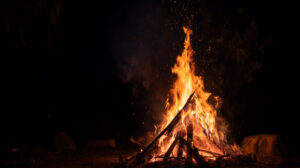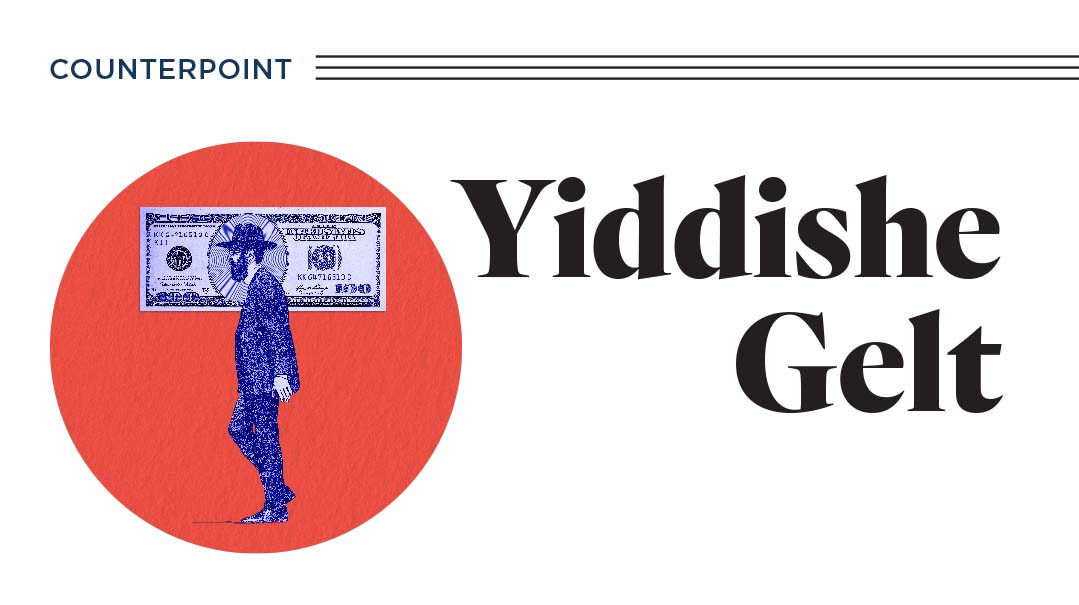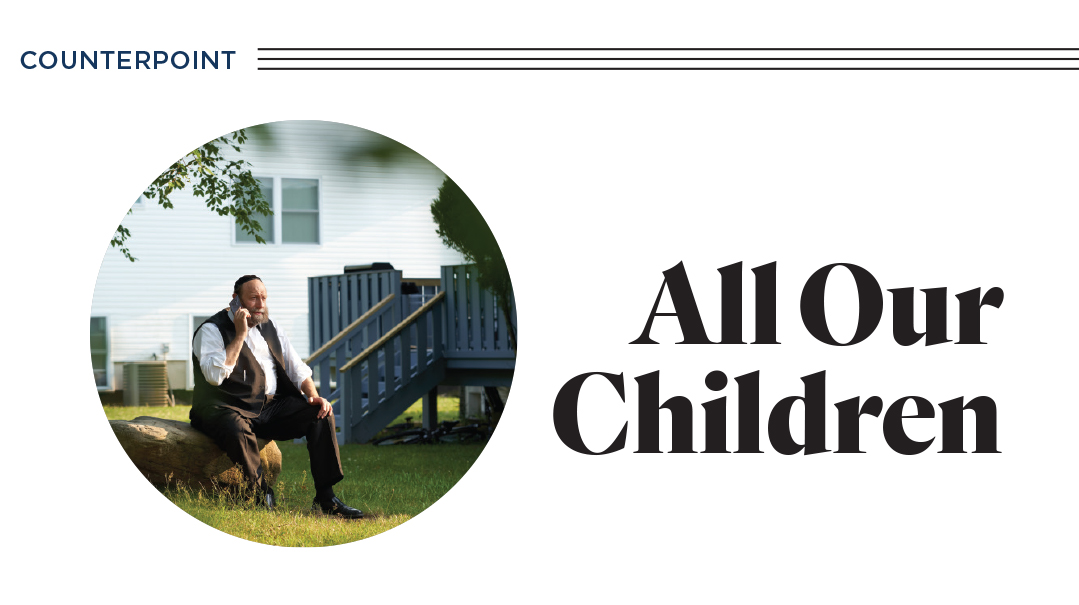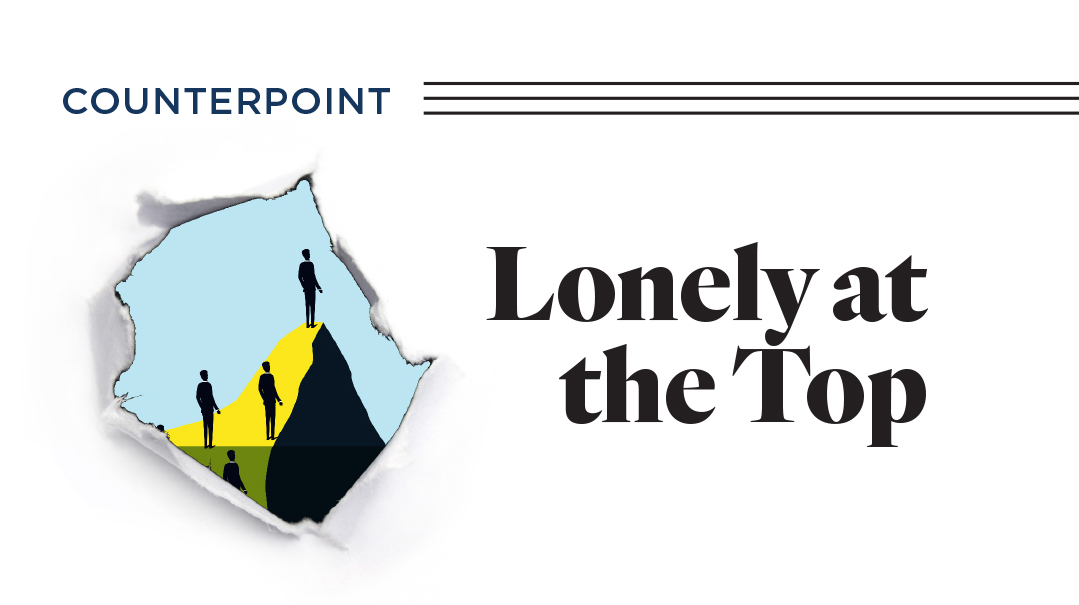Meeting the Baal Shem Tov in The 21st Century: Last Installment

More responses to 'Meeting the Baal Shem Tov in The 21st Century
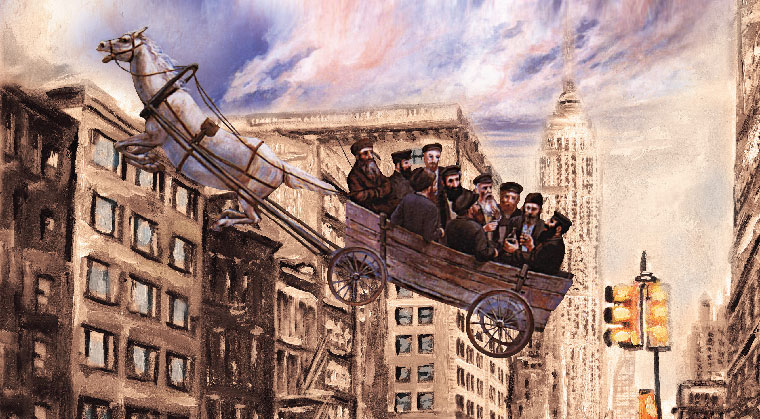
A Question of Percentages: Shimon Saltz, Far Rockaway, NY
As a talmid of Rav Weinberger shlita, I’d like to point out the middle ground in the ongoing discussion regarding chassidus versus Gemara learning. Throughout Jewish history there have been two pathways in avodas Hashem: the mind and the heart, e.g., Moshe Rabbeinu and Dovid Hamelech, the Rambam and Rav Yehudah Halevi, the Gra and the Baal Shem Tov. These paths are not mutually exclusive.
Just as one does not have the discretion to choose between learning Torah and davening, but must do both, so too one cannot choose the mind to the exclusion of the heart, or visa versa.
The question is only what percentage of a person’s avodah is heart and what percentage is mind. That is dependent on a person’s neshamah. Some of us lean toward the emotional side, others toward the intellectual side. Dovid Hamelech fully expressed his emotional side in Tehillim, yet the Gemara tells us how a part of his day was spent paskening halachic questions.
Despite his being a master teacher and proponent of chassidus, I have heard Rav Weinberger say that 90 percent of a person’s learning time should be spent on Shas and poskim and 10 percent on chassidic works. He also continually challenges his adherents to sleep less on Shabbos and spend many hours learning. So for all those who are worried that the movement toward chassidus is going to negatively impact Torah learning, stop worrying.
Not for the Masses: Chaya Cohen, Far Rockaway, NY
In “Meeting the Baal Shem Tov in 2018” (Issue 710) Rachel Ginsberg and Mishpacha magazine stepped into a minefield. I believe that it was an unintentional but grievous omission that left the vacuum in which the ensuing conversation (in Issue 712) flourished. And it was a most upsetting — and not terribly respectful — dialogue.
How different the article and the consequent dialogue would have been if the perspective of gedolei Yisrael would have been brought into the picture. Anyone familiar with the main body of Torah leadership of the past century knows well its standpoint on the issue, and there’s no essential difference between the leading roshei yeshivah and the foremost chassidic rebbes. With only singular exceptions, the overwhelming position of those manhigim, following the shitah of their predecessors, shunned any spiritual initiative that did not have at its core a primary value of traditional limud haTorah and dikduk b’mitzvos. They would have rejected any program that circumvented those values, focusing first on other spiritual venues of connection and esoteric study.
Also, we, the women of the global community of bnei Torah, were not troubled “why there [is] no mention of the other 50 percent of the population.” However, we are troubled that there are “thousands of women of all ages whose lives have been transformed through exposure to pnimiyus haTorah.” This is not the way of gedolei Yisrael. Surely they could appreciate the appropriate exposure of sublime enhancements in avodas Hashem to individual women bnos aliyah, but not to thousands of women of all ages!
We all know the degree of vehement disapproval they would display at the promotion of widespread limud kabbalah for women as a means of engaging the disengaged.
Not a single reference of support by a plurality of recognized Torah leaders was made — nor could be made — in the entire discussion. And any initiative by mashpiim who cannot point to the direct guidance of the august body of contemporary or recent gedolei olam belittles kavod chachamim; it should not go without response in a Torah-true publication.
The Inspired Life: S.K., from New York
As a bochur who went through the regular yeshivah system and is now working in it, I think that we can all agree that things are not the same now as even five years ago. Today’s bochurim are stuffed with so much shtusim from all angles, more than the average man experienced in his entire lifetime just a few generations ago.
What Rabbi Weinberger is really saying is that the only answer to combating all the shtus in the world is to reach the bochurim in yeshivah (and ourselves) in a real, deep way, in a place that’s so deep that “mayim rabim lo yuchlu lichabos.” A place that is so deep that no technology or bad habit can have any say.
Addictions, drugs, and technology don’t discriminate between chassidim or yeshivah bochurim. Generally they attack those who are living painful, empty, and unfulfilled lives. The Maharal explains in Nesiv HaTorah, perek zayin, that Torah is external to the person, and it’s our job to make it internal. He explains that it is very possible that a person could live out all his years with a Torah that is not internalized. But in this generation, you can’t get away with that anymore; as the Gra famously says, there is no real middle path, either it’s up or down.
I heard from an adam gadol that “in this generation there are no more chassidim or misnagdim, it’s either inspired or uninspired.” It’s because of the bombardment of the secular world that we’re forced to dig deep inside ourselves, our talmidim, and our children, and start living deep and inspired lives. It’s an invigorating, difficult quest, but as a melamed, for me to just to shrug it off and label it as “new age sugarcoating” is not a responsible thing to do for myself, or for any talmidim.
The subject of living a pnimiyusdig life, which was ignored by many chassidim and Litvaks alike for a long time, is slowly being pushed into the spotlight. Living an inspired life is focused around one thing: our connection to Hashem. There are no seforim in the whole world that speak about the dveikus between Hashem and the Bnei Yisrael like sifrei chassidus/pnimiyus haTorah. It’s important that everyone be exposed to such depth, even if you are not “chassidish,” because without strong roots we can’t survive the storm.
Time to Synthesize: Yehudis Golshevsky
It’s not surprising that the pre-Shavuos article on the grassroots interest in chassidus has generated so much feedback; maybe blowback is the better word. Serious students of chassidus object to being characterized as emotional adventure-seekers; those whose orientation is not chassidic resent the implication that inspiration isn’t to be found within Shas and the classic works.
Truthfully, I also have a hard time with that. I don’t find the Chovos Halevavos less inspiring than sefer Tanya. What I do find is that immersion in the chassidic works over the last 25 years has provided me with ever-deepening appreciation and the ability to actually make use of the Chovos Halevavos. This is an evolving process. I feel the same way about the Telz mussar that I learned at the feet of Rebbetzin Chaya Ausband tlita, my mentor. Hopefully, all that we learn alters us, shifts our perspective, and makes us more susceptible to the possibility of transformation and closeness with Hashem, others, and ourselves. Shiurei Daas often calls this the state of hispa’alus — an inner readiness to be moved and changed.
One of the elements in the article that I had a hard time with was the mention of the trips that I lead to Ukraine to kivrei tzaddikim. That’s a total of ten days out of every year. During the other 355 (and also during those ten, actually) I teach 12 hours a week, subjects ranging from Tehillim to Ein Yaakov, from parshas hashavuah to Chovos Halevavos. And, yes, also chassidus. The women who attend class aren’t coming for what we call in Israel “rigushim” — emotional thrills or highs. They know that the pathway to the Creator is in being attentive to His Will, expressed via His Torah and the world that He orchestrates around and within us.
This is the work that we do, and I don’t see it as being essentially different from what I learned in Yavne. A genuine davening is a genuine davening... whether it takes place in Telz or in Belz. And an outward-focused mechanical avodah can take over either of those places. Neither of them guarantee spiritual development. A person chooses, hopefully, the environment in which they find it is most possible to attain genuine closeness to Hashem.
Let us learn from our last three hundred years at least some lessons, and learn to synthesize the best of all approaches. Rigorous Torah study is not the fiefdom of Litvaks; heartfelt avodah is not the monopoly of chassidim. It is the responsibility of each one of us to take hold of every resource available to us and build, as Rav Elyah Weintraub ztz”l would say, the ark that will lift us above the floodwaters of the time. The ark is an internal hashkafas hachayim built firmly on pnimiyus haTorah, one that keeps us buoyant and viable as the tide rises ever higher.
(Originally featured in Mishpacha Issue 714)
Oops! We could not locate your form.

